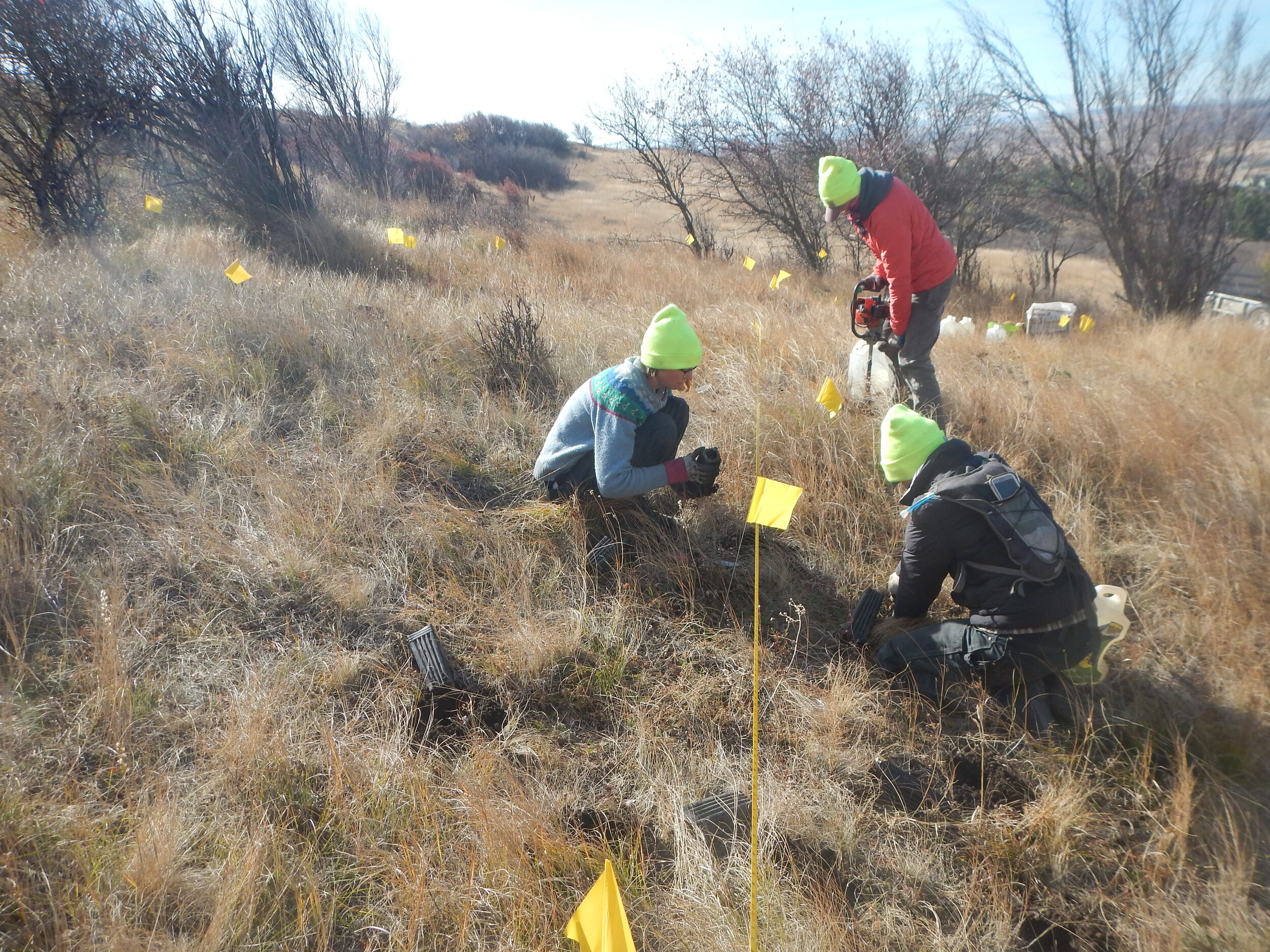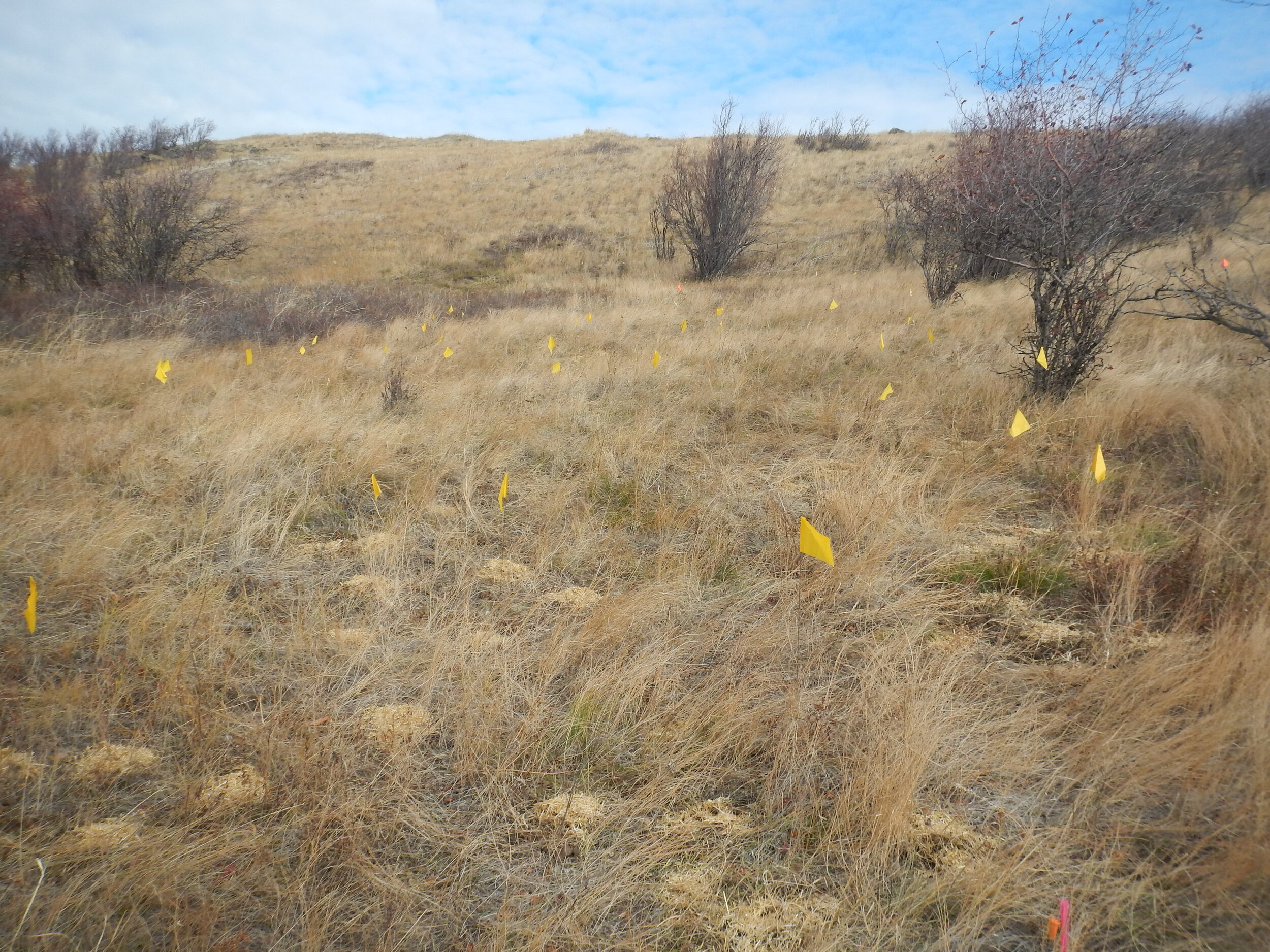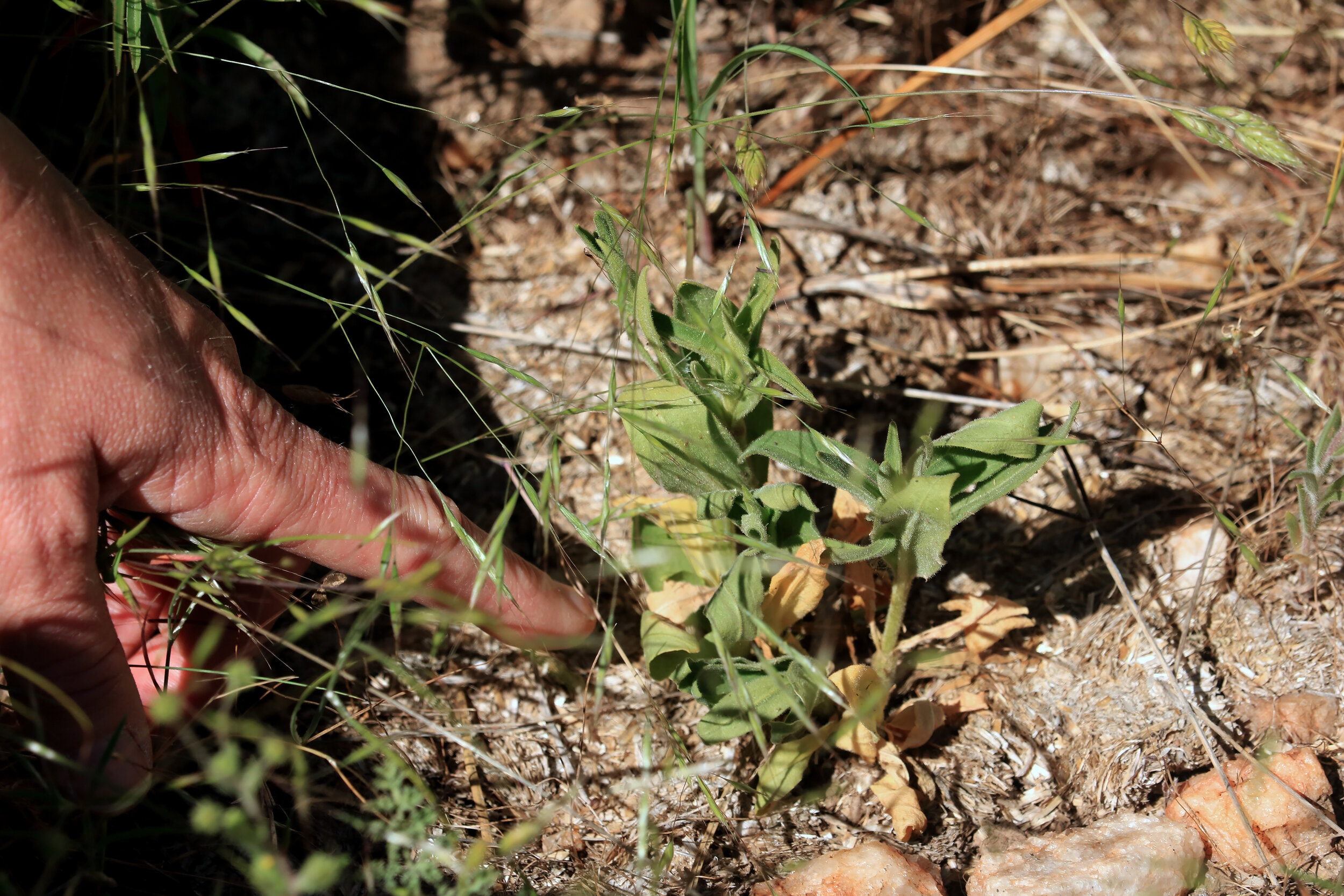Spalding’s catchfly restoration at the Skinner Preserve
Thanks to our partners at Latah Soil and Water Conservation District (LSWCD), 210 plants and 10 grams of seed have been installed in October 2019 at the Dave Skinner Ecological Preserve to aid in species and ecosystem recovery.
Spalding’s catchfly (Silene spaldingii) is a federally threatened plant that is endemic to the native Palouse Prairie. This rare plant is part of a federal Species Recovery Plan, designed to bring not only the species, but the endangered Palouse Prairie ecosystem back from the brink of extinction. In addition to being fairly unremarkable in terms of appearance, this little plant is also very difficult to establish, as it may remain dormant for 3-6 consecutive years without reappearing! It only reproduces via seeds, and flowering often does not occur until the 3rd growing season, or sometimes later in the plant’s life. To boot, tap roots can often extend over 3 feet into the soil, making transplantation nearly impossible.
Spalding’s cathfly in rosette stage
Catchfly in bloom. Photo courtesy of USFWS.
Your continued support makes it possible to work in partnership with LSWCD and Thorn Creek Native Seed Farm to carry out this highly technical and delicate restoration project, as well as active habitat management to control invasive species encroachment.






